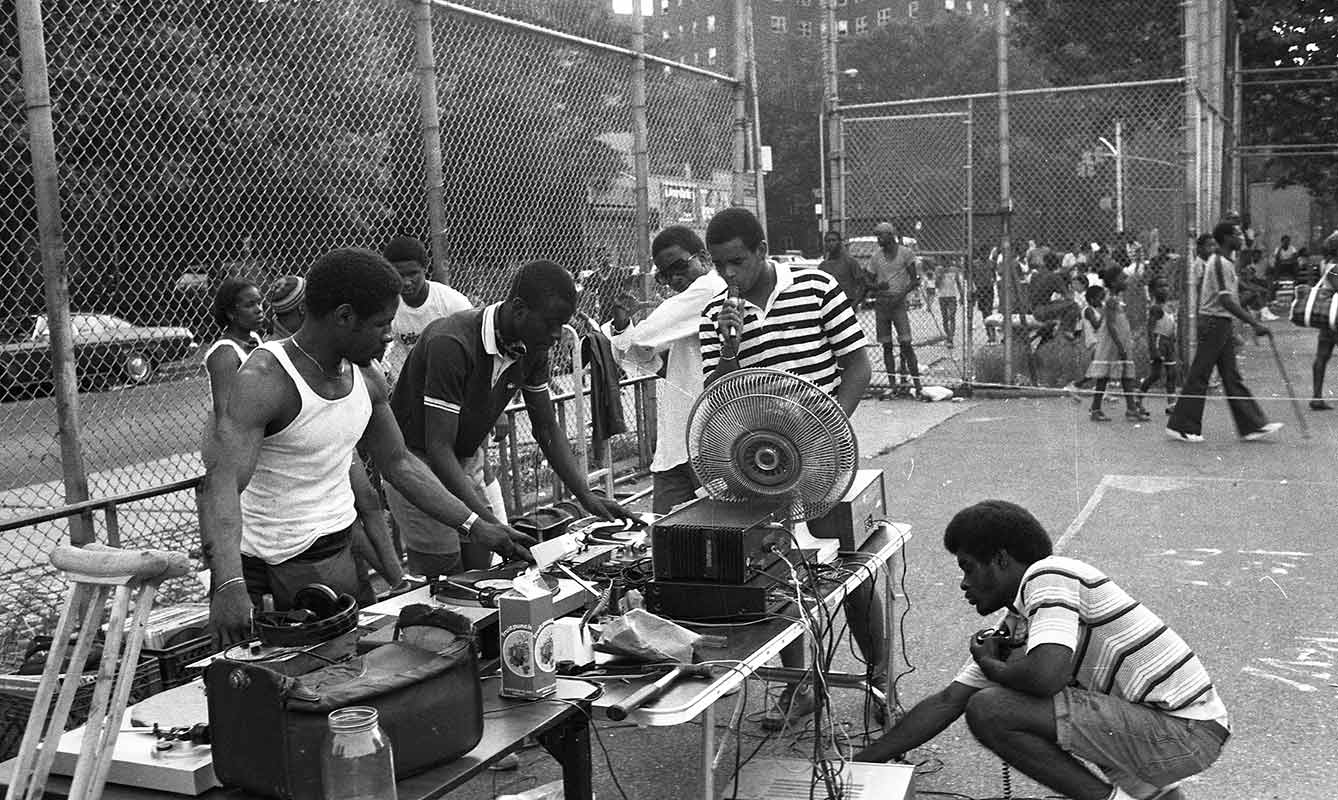cf. Hip hop (music), Hip hop (dance)
Work in progress
Etymology and Definition
The term hip hop appeared in MCing in the late 1970s, with a notable occurrence in "Rapper's Delight," recorded in August 1979. The Guardian reported that "the term 'hip-hop' is attributed to either Cowboy or Bronx MC Lovebug Starski as a parody of a drill sergeant's marching chants but wasn't popularised by Bambaataa until 1982" . Early authors mention only Starski , through whom Afrika Bambaataa encountered the term, while later accounts, by Grandmaster Caz, Melle Mel, Kid Creole, and others, claim Cowboy's priority . Around the same time, Cholly Rock recalls, "we weren't even calling it hip hop [...] it was a derisive term, originally. And it really referred to us as b-boys, because of the way we danced, and we were wearing sneakers, and clubs don't like that shit [...] they looked down on us as thugs, and they called us hippity hoppers, and boi-oings, and floor sweepers" . Kid Creole and Grandmixer DXT offer similar accounts . The term appeared in print in 1979—the earliest The Hip Hop Museum has found—on a flyer, for a July event in Brooklyn, which includes a "BATTLE OF THE HIP HOP MCs" contest, and in a December Amsterdam News article, covering a "Rapper's Contest" in the Bronx, in which "hiphop" is equated with "rap" . Early definitions, informed by Bambaataa, were given in 1982 . Some time before this, Bambaataa had started naming his parties "hip-hop jams" —the April 1981 "Hip-Hop Family Reunion Jam" is a likely example. Various other names were used: a flyer from two years prior reads "Soulsonic Freakjam" and "Another Beebop Sureshot," George heard "b-beats" , Ahearn recalls "MC party" , and Chalfant would opt for "Graffiti Rock." How the words "hip hop" sounded was a factor for Bambaataa: "I liked the sound of what [Starski and Cowboy] were saying. And when the media come to speak to me—'cause we could have called it 'the go-off,' 'the boi-oi-oing,' the 'scat rap' and all that type—but I liked that sound" . Chang and Safire speculate on the words' historical content . For Bambaataa, "this is hip, and when you feel that music you better hop to it" . Others have similarly resignified the term; RZA, for example, says, "hip means something that's 'hip'—back then, it means it's cool, it's on point" and "the hop is the bop of the beat" .
Hip hop commonly refers to rap or hip hop music. Hip hop, in the sense of hip hop culture, refers to values and practices, or a "way of life," and its expressive forms, developed by young people, primarily black and Hispanic, in New York in the 1970s. As Bambaataa outlined in 1983, "the whole culture which is called hip hop started in the West Bronx by a DJ by the name of Kool DJ Herc" and "is now internationally known" . The concept contains an elevating element, with focus on its artistic achievements, providing a "reservoir of the best that has been known and thought" in which to see one's community and oneself, functioning as a source of identity. Bambaataa's idea of DJing, MCing, breaking, and writing as hip hop's "Four Elements" was effective in the early 1980s, though it quickly became a slogan. He would later amend it, as in Freshest Kids (2002):
Fun, along with individuality and searching for what's "fresh" , remain some of hip hop's most consistent values. Yet there is an apparent disconnect between these ideals and the concrete suffering and unfreedom experienced throughout hip hop's history. Chuck D, writing in 1997, was concerned with those who "dilute the culture with a lack of proper information about Black life in general" . Hip hop is not only expression through its art forms, but the content of that expression. Dr. Dre, for instance, comments that some of his own music "talks about crime, violence, and drugs because it exists" . Rose therefore argues, "life on the margins of postindustrial urban America is inscribed in hip hop style, sound, lyrics, and thematics" . At the same time, KRS-One notes, "we saw the Bronx not according to the environment, but who we were in it" . Thus, Ken Swift observes, "hip-hop is a colorful culture. It's vibrant. It's a culture that just has to be larger than life" . The broad socioeconomic accounts merely brand a separate, immobile underclass with unique music and style—precisely the early definition of "hippity hoppers" that was rejected. For Kool Herc,
Often, what is meant by "hip hop" is its "original spirit" , though it must be recognized that hip hop has always been a battleground where its shared values are contested by its community, and in this way it continues to evolve.
GRANDMASTER FLASH: You know what bugs me, they put hip-hop with graffiti. How do they intertwine? Graffiti is one thing that is art, and music is another.
KOOL DJ HERC: I was into graffiti. That's where Kool Herc came from.
